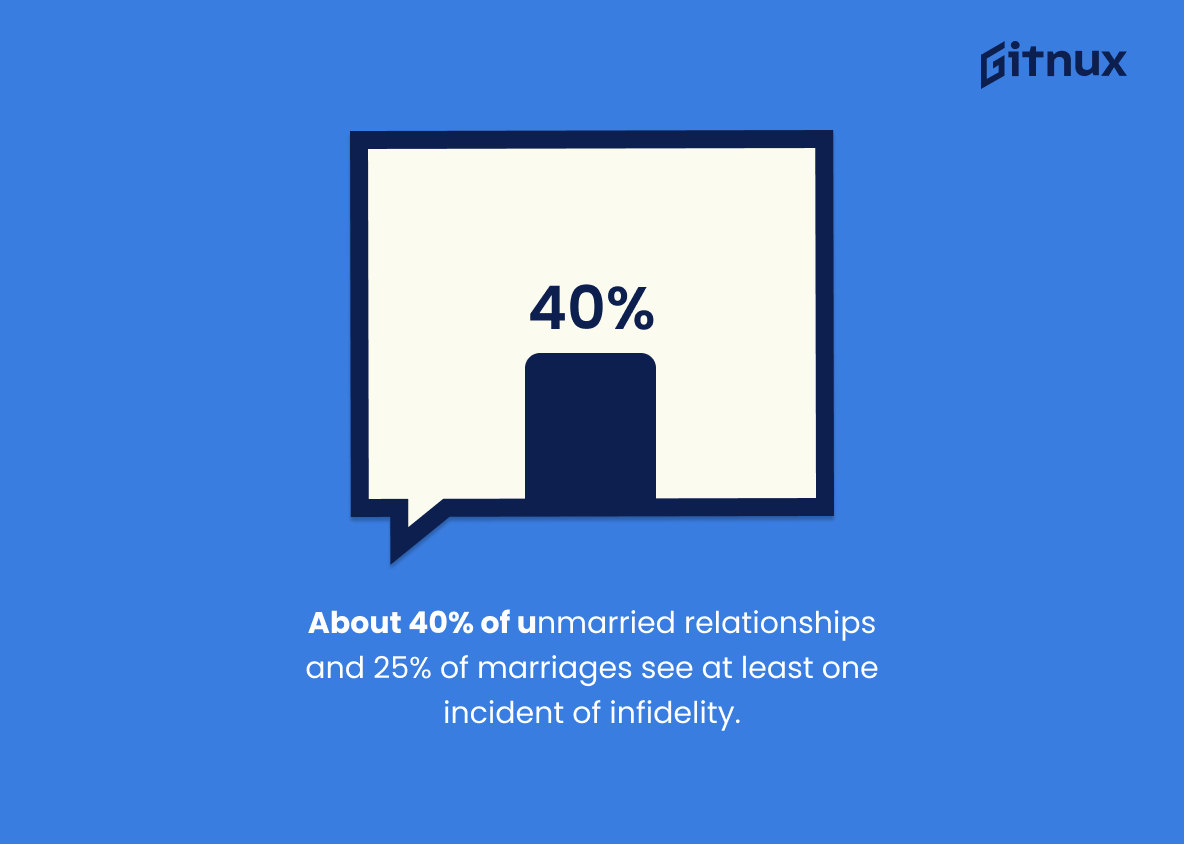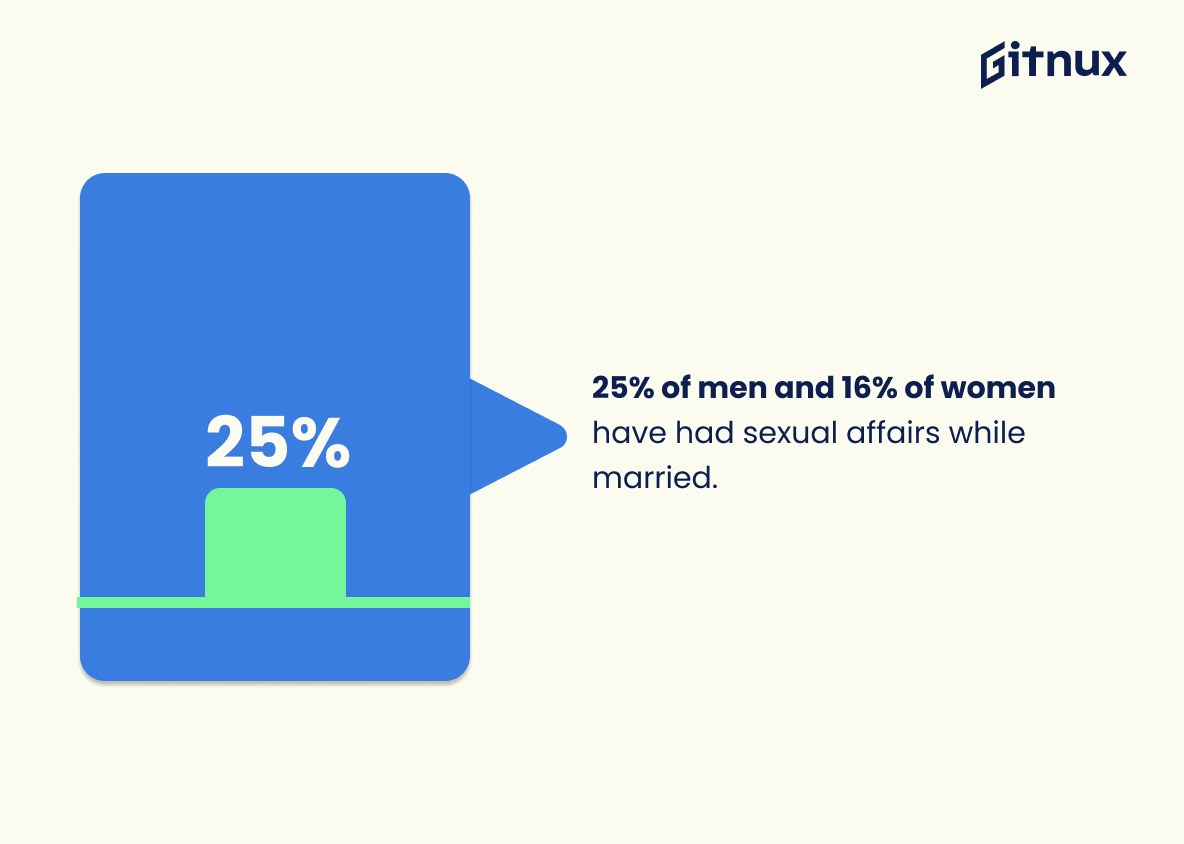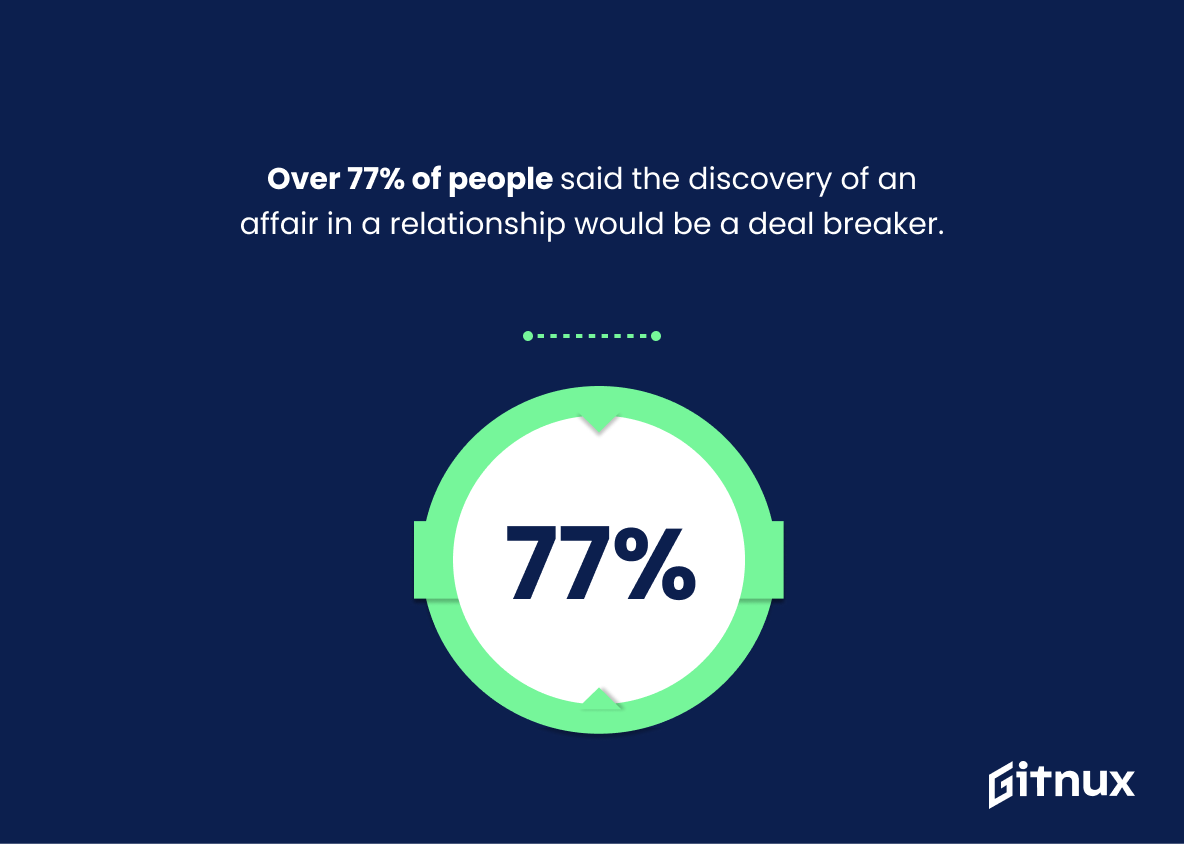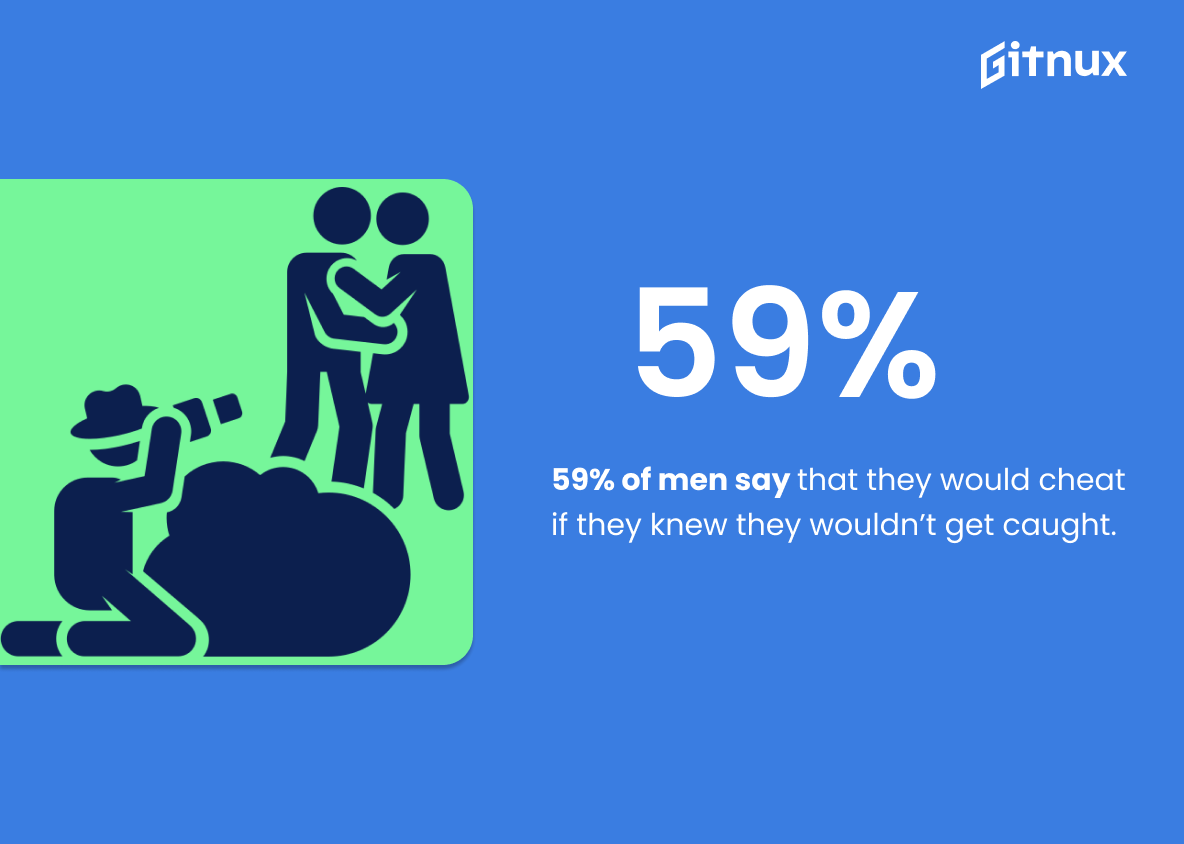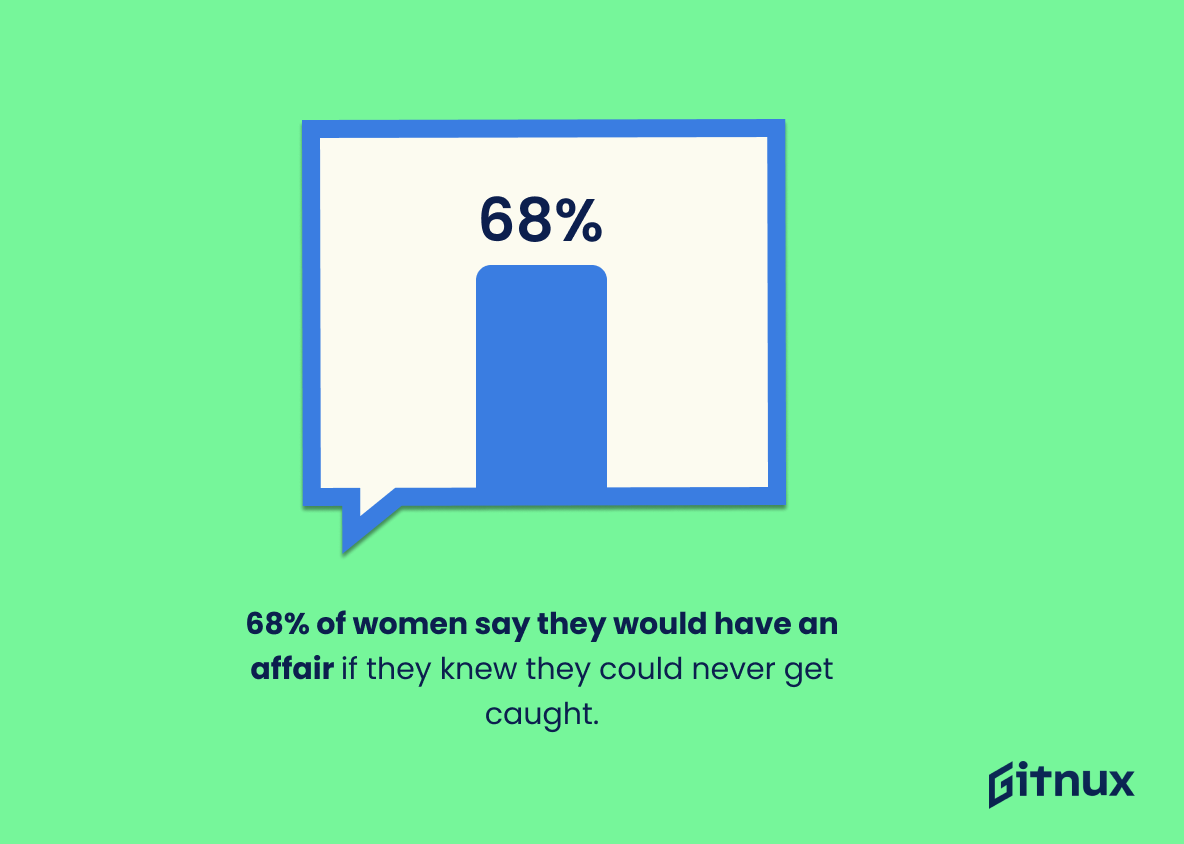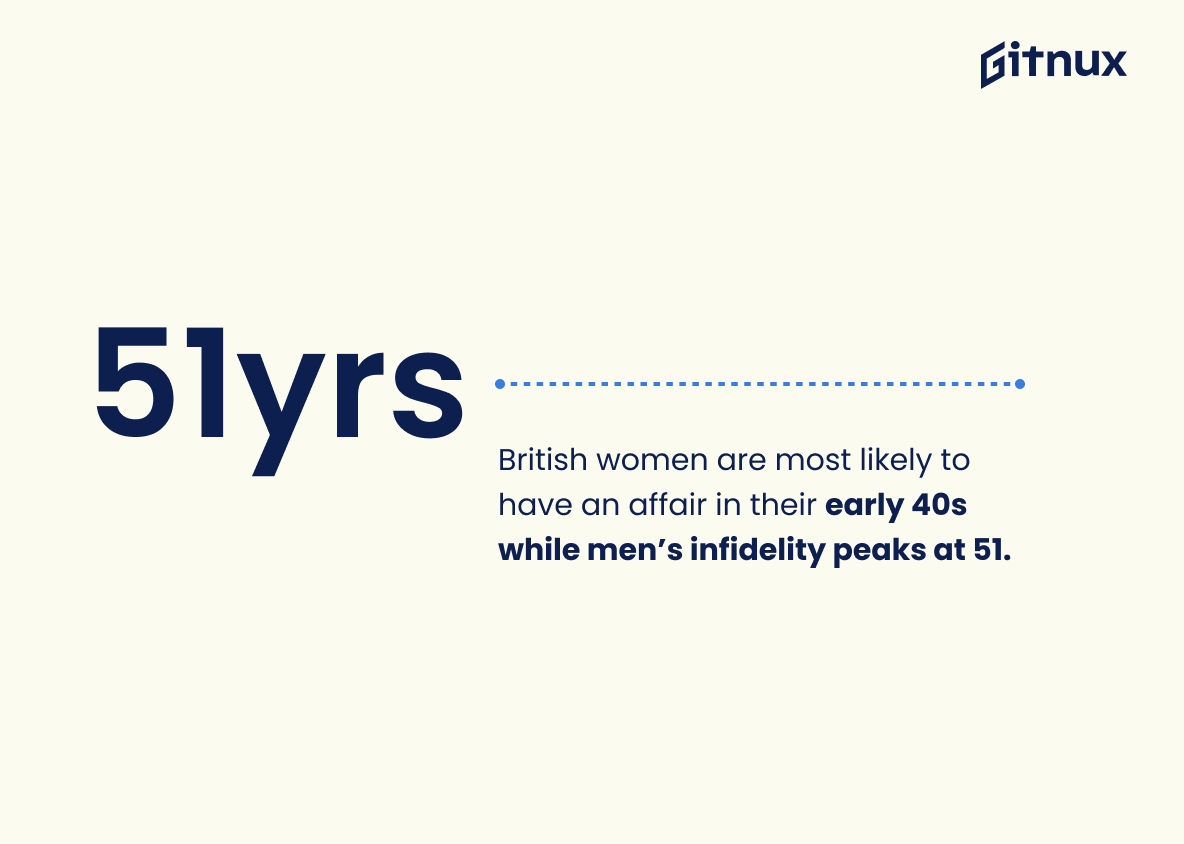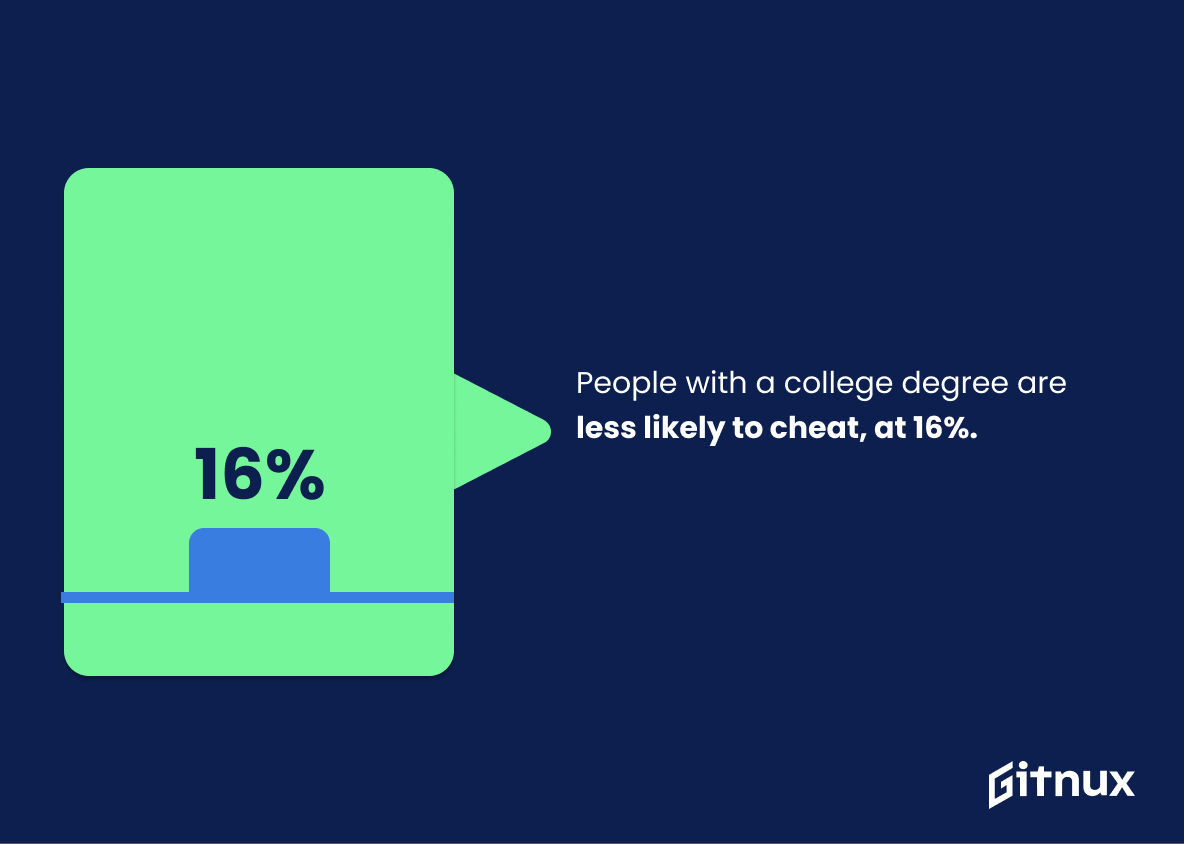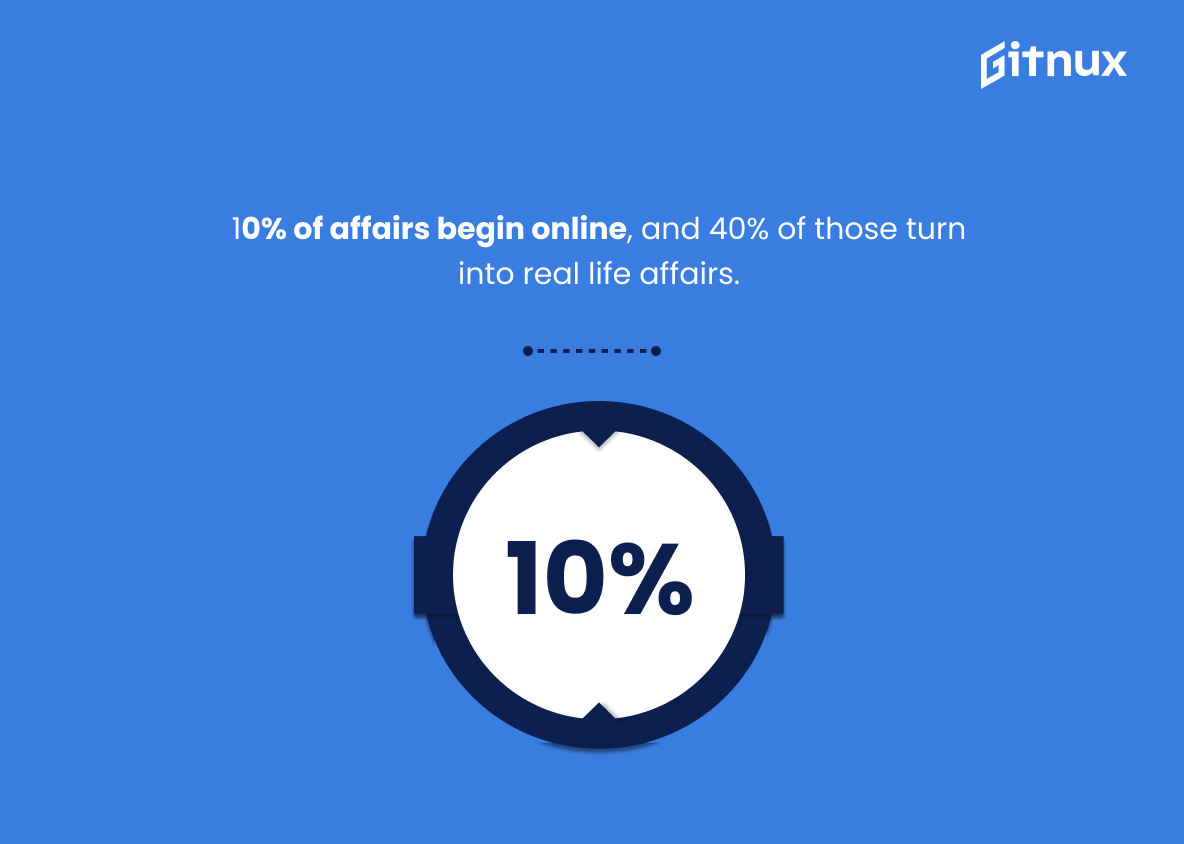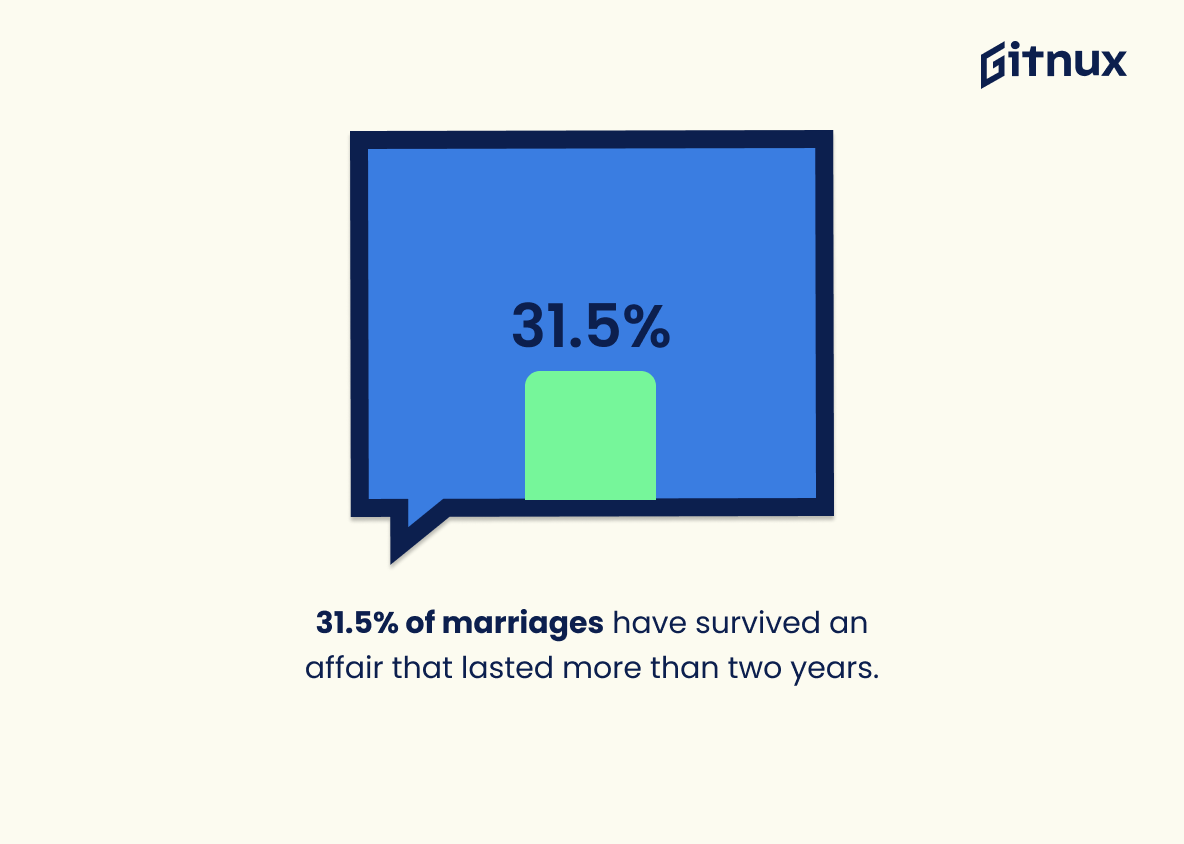In the maze of relationship norms and societal expectations, slips and stumbles occur – case in point, affairs. As an unsettling yet prevalent phenomenon, extramarital affairs influence millions of relationships worldwide. Understanding affair statistics ostensibly peels back layers of ambiguity, throwing light on the “whys” and “hows” trailing this widespread predicament.
The following blog post plunges into the depths of affair statistics, dissecting the causes, consequences, and curiosities that revolve around infidelity. Engage with us as we delve into this unsettling reality, reflecting on the incisive truths and revelations that may help foster robust, resilient relationships.
The Latest Affair Statistics Unveiled
36% of people admit to having an affair with a coworker.
Unveiling the intriguing statistic that 36% of individuals confess to engaging in clandestine rendezvous with a coworker could serve as a striking lightning rod in our exploration of affair statistics. It underlines the fact that workplaces, often seen simply as platforms for professional growth, can also turn into hotbeds for intimate encounters. This percentage is an emblematic reminder of our complex interpersonal dynamics in shared spaces, conjuring compelling context for broader discussions around marital infidelity, individual choices, and the delicate dance between personal and professional realms.
About 40% of unmarried relationships and 25% of marriages see at least one incident of infidelity.
Painting a vivid picture, the stark reality of infidelity expressed in these numbers gives a bitter tang to the all-too-sweet concepts of love and commitment. In the tapestry of affair statistics detailed in this blog, these figures serve as startling color splashes. They underscore the prevalence of infidelity, not just in less formal unions, but alarmingly within the sacred bounds of marriage itself.
Through the looking glass of these numbers, love’s battleground seems fraught with the peril of unfaithfulness and deceit. These statistics are the silent trumpets heralding a warning and a call to introspection about the depth of commitment and loyalty in today’s relationships.
An affair is most likely to occur two years into a marriage.
Navigating the whirlwind of married life can often be a rollercoaster, with many peaks and valleys. The statistic that an affair is most likely to occur two years into a marriage paints a crucial picture in understanding the nuances of marital fidelity. It offers a look into the crucial timeline, indicating that the so-called ‘honeymoon phase’ fades sooner than we think, and tough challenges begin to make their mark after two years. This tidbit of information becomes the spotlight that illuminates the road to understanding points of vulnerability in a marriage, offering actionable insights to couples and counseling professionals on when interventions may be most effective.
Thus, a statistic of this kind becomes a potent anchor in a blog post about Affair Statistics, offering a snapshot into the hidden intricacies of marital fidelity that continue to baffle many. It highlights the need for continually nurturing marriages well beyond the initial blissful years. Readers may likely find value in this understanding, providing them with a time frame to focus their attention on enriching their relationships or seeking professional help if needed.
25% of men and 16% of women have had sexual affairs while married.
Delving into the realm of infidelity reveals intriguing data. The figures, showing that 25% of men and 16% of women have strayed from their matrimonial vows, illuminate the undercurrents running through marriage institutions. Such numbers don’t merely serve to shock the reader; it’s an empirical glimpse into the nuanced dance of fidelity and betrayal cushioning the fabric of many modern marriages.
This information furthers understanding of the behavioral intricacies in both genders. It’s an invitation to explore how biology, society, and personal circumstance intersect in nudging individuals off the course of faithfulness. In essence, these figures are a window to a continuing dialogue about today’s marriage fidelity landscape, crucial in an enlightening blog post about Affair Statistics.
Over 77% of people said the discovery of an affair in a relationship would be a deal breaker.
The glowing number of 77% conveys how an affair’s discovery can wreak havoc in a relationship, manifesting as a tangent of irrevocable damage for many. It reinforces the poignant reality that trust, once broken, is challenging to rebuild, casting an almost unanimous agreement about it being a ‘deal breaker’. Therefore, for anyone delving into the labyrinth of affairs, it’s a stirring reminder of the overwhelming odds of severeing a relationship that may follow. This statistic unequivocally illustrates the intensity and consequence of infidelity, providing an unvarnished truth that colors the broader tableau of affair statistics in our blog post.
59% of men say that they would cheat if they knew they wouldn’t get caught.
In delving into the realm of Affair Statistics, it’s a fascinating, yet alarming insight that nearly three-fifths of men claim a likelihood to indulge in an affair given guarantee of impunity. This piece of data paints a vivid picture of the complex labyrinth that is human desire and morality.
Whether the motive stems from dissatisfaction, thrill, or a vestige of primal instincts, this statistic brings us face-to-face with the enticing power of the forbidden fruit, and the subtle yet compelling role it plays within the tapestry of human relationships. By scrutinizing such numbers, we may gain a deeper understanding of why infidelity occurs often enough to become a significant topic for study and discussion.
74% of men and 68% of women say they would have an affair if they knew they could never get caught.
In the intriguing landscape of Affair Statistics, the previously mentioned percentage garners attention. Our eyes open wide at the surprising revelation, illustrating the inherent human curiosity and desire for forbidden, risk-free ventures. The statistic serves as a chilling courier of brutal honesty, blurring the lines between fidelity and discreet fantasy.
It does so by comparing the fluctuating tendencies among genders; 74% of men versus 68% of women admitting to potential infidelity, given assurance of no repercussions. This palpable contrast opens a dialogue, igniting discussions about morality, loyalty, and hidden desires, thereby injecting our blog post with a dose of raw truth and substance.
British women are most likely to have an affair in their early 40s while men’s infidelity peaks at 51.
As we traverse the labyrinth of affair statistics within the confines of a typical British relationship, it reveals some astonishing milestones. From the viewpoint of the fairer sex, the propensity towards infidelity seems to peak when a woman is hovering in her early 40s. On the flip side, a man’s fidelity is strained most at around 51 years of age. This statistic plays no small part in painting an evocative picture of adult relationships in the UK.
Understanding these age-specific infidelity peaks is akin to unravelling the most twisted and crucial layer of this statistical onion. It is not only crucial for demystifying the murky territories of affairs but also offers valuable insights for relationship counselors, therapists and anyone walking on the tightrope of matrimony. Consequently, it might be helpful in paving the way to strengthen bonds, retune expectations, and even help failing relationships navigate their way back to solid ground.
Furthermore, it nudges us to reassess societal and gender beliefs ingrained within our consciousness. So, while unearthing the complex truths of infidelity, let’s acknowledge this statistic as our guidepost in this exploration. In essence, it is not just a number, but a profound revelation of relationship dynamics within the confines of age and societal pressures, in the United Kingdom.
People with a college degree are less likely at 16%, compared to those without a degree at 30%, to have cheated on their spouse.
In the realm of Affair Statistics, the scholastic distinction leaps off the page: those with a college degree are less inclined, at a lower rate of 16%, to stray from monogamy compared to their counterparts without a degree, sitting at a 30%. An extrapolation of these intriguing figures contributes weight to the idea that higher education might play a pivotal role in promoting fidelity.
With such eye-opening data, our understanding of the correlation between academic achievement and marital loyalty becomes more refined. Thus, this fascinating statistical nuance uncovers an unexpected educational facet in the widespread discussion around infidelity, thereby enriching the conversation with a previously unexplored perspective in our blog post about Affair Statistics.
10% of affairs begin online, and 40% of those turn into real life affairs.
To appreciate the gravity of digital age affairs, consider this: a staggering 10% of affairs spark in the vast wilderness of the online world. More astonishing is the fact that nearly half of these online flirtations transform into tangible, real-life affairs. These figures lend critical insight into the digital landscape as an incubator for infidelity, defying the once physical boundaries of old.
It’s a compelling testament to the blurred lines between virtual interaction and physical entanglements, serving as a sobering wake-up call for those pursing connectivity in the boundless digital age. In the context of affair statistics, it notably underscores the role of technology as a potential facilitator in infidelity, demanding a revised understanding of the modern relationship dynamics.
Emotional affairs are more common than physical affairs, with 45% of men and 35% of women admitting to having an emotional affair.
This captivating statistic offers a profound insight into the realm of affairs, piercing through the conventional stereotypical perception that affairs are predominantly physical. The revelation that emotional affairs are more prevalent with 45% of men and 35% of women confessing to this fact, compels us to revisit our understanding of infidelity. And in doing so, it equips the readers with an enriched and more nuanced perspective.
For a blog post about affair statistics, this illuminates the less treaded path of emotional infidelity, verifying that it’s not the physical contact alone, but shared sentiments and vulnerability that often breaches the bounds of relationships. This magnifies the necessity for emotional honesty and transparency as much as physical loyalty in maintaining healthy relationships.
31.5% of marriages have survived an affair that lasted more than two years.
Peeling back the many layers of marital fidelity, one will stumble upon the rather intriguing statistic that highlights 31.5% of marriages triumphing over a prolonged affair of over two years. This statistic is undeniably substantial in the complex narrative of affair statistics, adding a certain flavor of hope and resilience.
It gives the story a unique twist, emphasizing that not all breaches in trust necessarily lead to dissolution, and that relationships can indeed navigate through, and potentially even rehabilitate from the tumultuous seas of infidelity. Therefore, this statistic injects a nuanced perspective into the discourse, illuminating the fact that, while daunting, affairs do not always mean the end of marriages, thus offering a compelling counterpoint to the fatalistic views often associated with this topic.
Conclusion
To conclude, affair statistics reveal eye-opening insights into the complexities of contemporary relationships. They underline the importance of transparency, faithfulness, and continuous communication within a relationship. Evidently, affairs are not simply a matter of personal failure, but an issue influenced by multitude of societal, individual, and relational factors.
It’s vital that we consider these statistics not as deterrents or reasons to doubt our partners, but as catalysts for discussion around maintaining healthiness in relationships. By addressing the root causes of infidelity, we are one step closer to decreasing these figures and fostering stronger, more fulfilling relationships.
References
0. – https://www.www.babyboomers.com
1. – https://www.www.businessinsider.com
2. – https://www.www.dailymail.co.uk
3. – https://www.www.survivedivorce.com
4. – https://www.www.fatherly.com
5. – https://www.ifstudies.org
6. – https://www.www.webmd.com
7. – https://www.www.psychologytoday.com
8. – https://www.www.statisticbrain.com
9. – https://www.www.verywellmind.com
10. – https://www.www.bustle.com
11. – https://www.www.divorcestatistics.org

